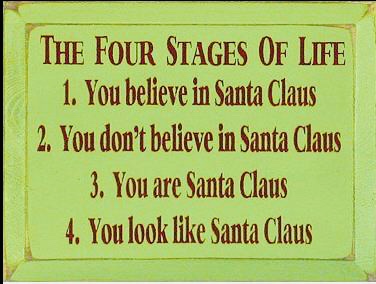Santa baby, with a sack full of trouble

Did you ever believe in Santa Claus? I did, and that was so long ago if you said old Saint Nick was white, no one batted an eye lash. A few years ago that belief was one of the bill of particulars that led to Megyn Kelly losing her job as an NBC Today anchor. (She also had opined that Jesus was white.)
Times change. My Santacentric beliefs were formed before Twitter, the digital thought police, had arisen from the slime. (Twitter is overwhelmingly left and young, and 10% of the tweeters create 80% of the traffic, yet it is somehow taken as a true barometer of public opinion. It is not.)
So I believed in Santa Claus until I didn’t and then I went into journalism and because of the famous “Yes, Virginia” editorial in the New York Sun, I had to believe in Santa again.
But not really. So that was Step 2 (above). Then I became a father, and, yes — Step 3: I was Santa Claus. (Well, we called him Hanukkah Harry, but the kids knew that was a joke.)
Then Step 4 and I look like Santa Claus. Around the girth, anyway.
Years ago, at the Daily News Christmas party, which was called a Christmas party, columnist Elmer Smith played Santa. Elmer was black. Still is, in fact.
This was our way of screwing with tradition. See — really — the character on whom Santa is modeled is indeed white, but the spirit he represents has no color and no nationality. Kelly went wrong when she walled off Clement Moore’s literary “A Visit from St. Nicolas” from the cultural appropriation of progressives who worship diversity.
Santa belongs to all the Virginias of the world and I expect the do-gooders soon will be doing something about his weight, because obesity is no laughing matter and he sets a bad example for kids.



